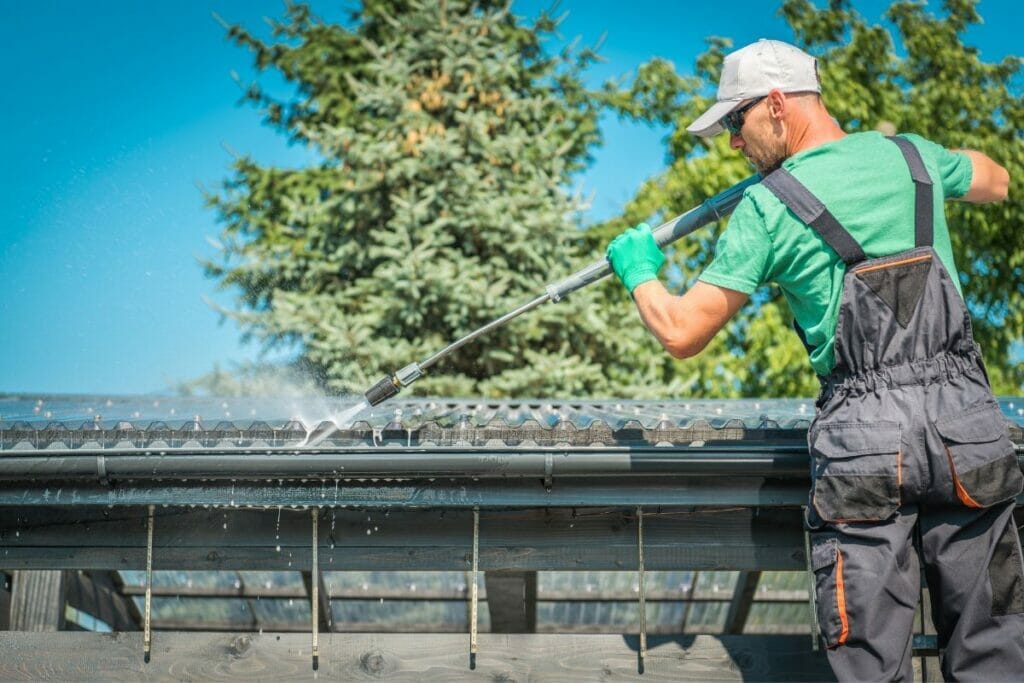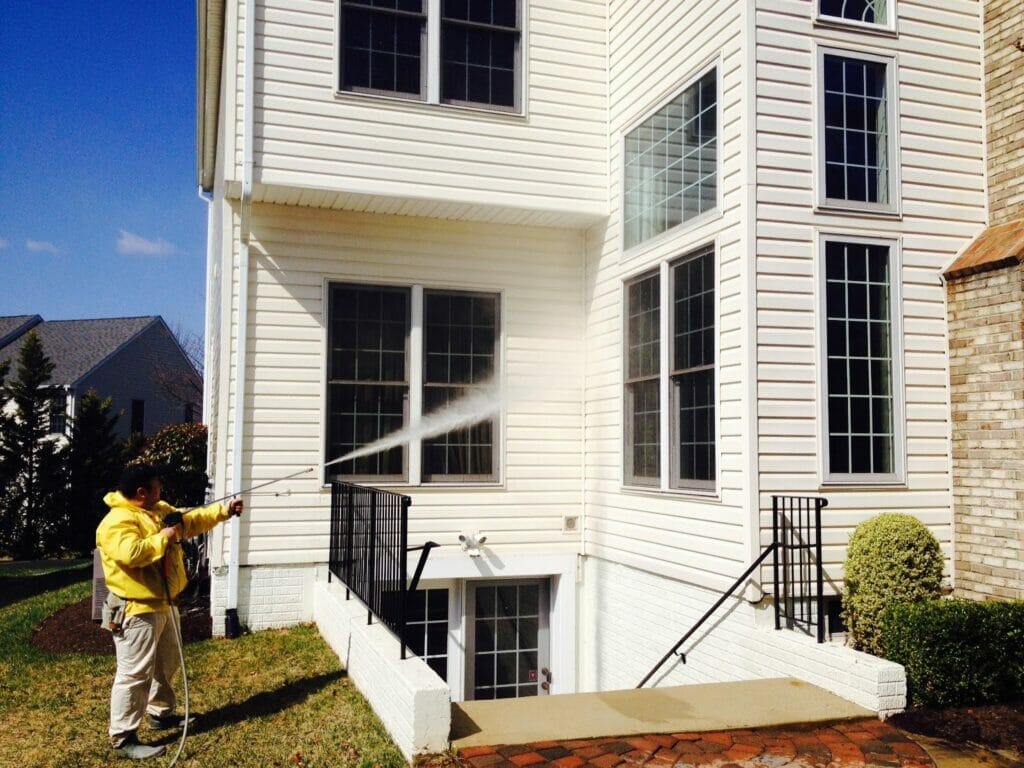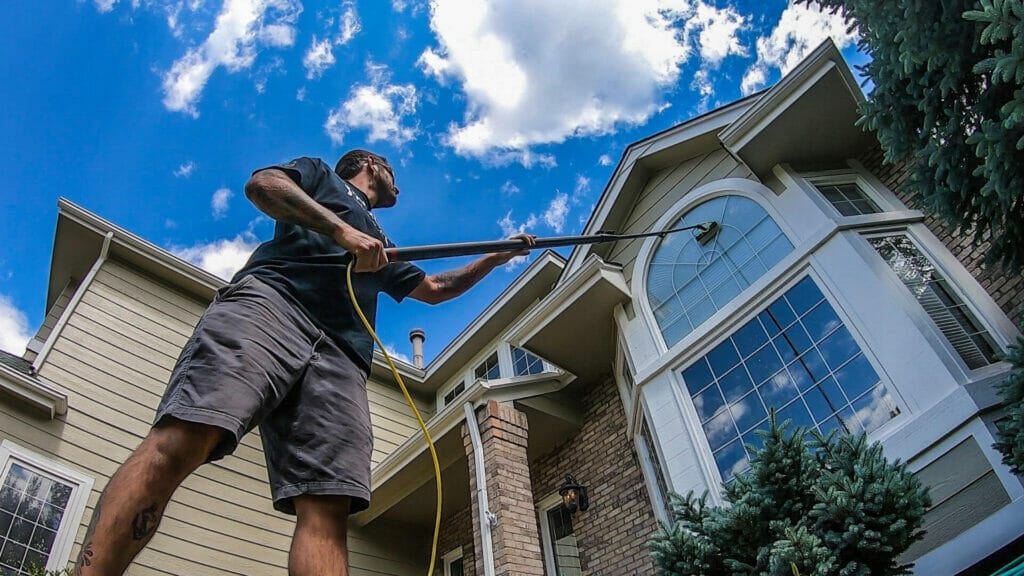Do you want to clean your home this spring? Perhaps the thought has crossed your mind, but questions like “Where do I start?” and “What do I do next?” may have hindered your progress. Well, fear not!
This blog post is here to assist you in ushering in the spring season with a spotless and organized home. By reading through this article and following our step-by-step guide, you’ll be well on your way to achieving a cleaner living space. So, let’s get started!
The Difference Between Regular Cleaning And Spring Cleaning
Regular cleaning refers to the routine cleaning that you do on a daily or weekly basis to maintain cleanliness and hygiene in your home or workplace. This includes tasks such as vacuuming, dusting, washing dishes, doing laundry, and wiping down surfaces.
Spring cleaning, on the other hand, is a more thorough and deep cleaning that is typically done once or twice a year, usually in the spring. Spring cleaning involves cleaning every nook and cranny of your home or workplace and decluttering, reorganizing, and refreshing your living spaces. It is the time of year to tackle tasks that are not typically done during regular cleaning, such as cleaning the windows, deep cleaning the carpets, washing curtains, scrubbing walls and baseboards, and cleaning out closets and storage spaces.
Overall, the main difference between regular cleaning and spring cleaning is the level of detail and thoroughness.
Preparation For Spring Cleaning
A. Plan Your Spring Cleaning Checklist
Randomly starting cleaning can make the process more time-consuming and stressful. Plan your day beforehand and create a checklist tailored to your home’s size, clutter, and number of rooms.
B. Gather Cleaning Supplies And Equipment
Gather the necessary supplies and equipment, such as cleaning solutions, microfiber cloths, vacuum cleaners, and brooms, to effectively clean your home.
C. Enlist Help From Family Or Friends
Involve family members in the cleaning process by assigning age-appropriate tasks. This can make them accountable and productive, giving them a sense of accomplishment and togetherness.
Room-by-Room Cleaning Checklist
You need a room-by-room cleaning checklist to clean your home strategically. It ensures that you have cleaned everything from top to bottom and disinfected all the surfaces in the home properly. Use the simple guide mentioned below to get the job done easily and efficiently.
A. Kitchen
As the kitchen requires effort, time, and close attention to detail, cleaning the kitchen first can be a good idea.
1. Cleaning Appliances: Wipe down appliances gently and carefully, and if they’re plugged into an electrical outlet, like a toaster, ensure it’s unplugged before cleaning.
2. Cleaning Countertops And Cabinets: Use a microfiber cloth and an all-purpose cleaner to clean countertops and cabinets. As they are the most used surfaces in the kitchen, they may contain additional grim and dirt.
3. Cleaning The Sink And Garbage Disposal: When it comes to the sink and garbage disposal, use a mixture of baking soda and vinegar to remove any odors and buildup. As these areas are known for bacteria growth, you must give them close attention while cleaning. Sprinkle baking soda around the sink and use a scrub brush to clean the surface thoroughly. For tough stains or buildup, use bleach if mixed with water.
4. Cleaning The Floors: Once you have cleaned everything, you can mop and clean the kitchen floor.
B. Living Room
The living room is an essential portion of your home. It is the place where we relax and entertain our company and find a sense of togetherness.
1. Dusting And Cleaning Furniture: The living room is often a place where we relax, entertain guests, and spend quality time with loved ones. However, it can quickly accumulate dust, dirt, and pet hair, making it look dingy and uninviting. Ensure you dust or remove hair from any furniture in your living room.
2. Vacuuming Or Cleaning Carpets: Carpets in the living room can accumulate dirt and contain grime due to heavy foot traffic, which can be difficult to remove. To keep them looking their best, consider vacuuming them at least once a week or more frequently if you have pets or allergies.
3. Cleaning Electronics And Accessories: The living room often houses a variety of electronics and accessories that can contain dust if left uncovered. The dust gathered on their surface contributes to damage and shortens their lifespan. In order to keep them working properly, you need to clean them.
D. Bathrooms
Bathrooms are critical spaces that need regular maintenance and cleaning. Since bathrooms are attached to bedrooms and living areas, keeping them clean and maintained will keep the air inside your home fresh and clean.
1. Cleaning The Toilet, Sink, Shower, And Bathtub: Regular bathroom fixture cleaning is essential to maintain good hygiene and prevent grime and bacteria buildup. Start by spraying a cleaning solution on the surfaces and scrubbing with a brush or sponge.
2. Cleaning Mirrors And Fixtures: Bathroom mirrors and fixtures can easily become cloudy with daily use. To clean mirrors, spray with glass cleaner and wipe with a microfiber cloth or newspaper to prevent streaks. Use a mild cleaning solution and a soft cloth to remove any buildup or water spots on fixtures.
3. Cleaning And Organizing Cabinets And Drawers: Keeping your cabinets clean and drawers organized can help you maintain their integrity and longevity. The drawers are often made of wood and deteriorate over time due to excessive accumulation of dust and water contact. Start by emptying them out and sorting through items to determine what to keep and discard.
If you’re seeking ways to integrate spring cleaning into your living spaces, check out this blog post by The Spruce “39 Expert-Approved Tips for Successful Spring Cleaning” for more information.
Takeaways: Some General Cleaning Tasks
Here are some general tasks for spring cleaning your home.
A. Decluttering And Organizing
Organizing your space can reduce stress and make you feel satisfied and peaceful. Declutter by putting away what you no longer need, fixing materials, recycling, and donating unwanted items.
B. Dusting Surfaces And Furniture
Use a soft cloth or duster to wipe down surfaces gently. For intricate designs or textures, use a soft-bristled brush.
C. Cleaning Walls, Baseboards, Doors, And Doorknobs
Clean walls and baseboards from top to bottom after cleaning fans and vents. Doorknobs often come into contact with different people and should be washed with mild detergent and wiped with cotton clothing.
Spring Cleaning Roof Checklist
You shouldn’t avoid cleaning and maintaining roofs during this time either, as they make up a home.
1. Roof Inspection
After a freezing winter, a roof inspection is a must to maintain a roof’s lifespan and support system. Since damage can occur due to snow compilation, finding and treating these areas promptly is necessary. The weight of the snow can also damage the underlying roofing materials, such as shingles, metal sheets, and tiles, which, if it remains unnoticed, can further damage the roofing system.
Moreover, before starting your roof inspection, ensure you take proper precautions, such as wearing slip-resistant shoes and finding a sturdy ladder and a spotter to hold the ladder for you.
You can take the following steps to ensure a proper inspection:
- Look for missing or broken shingles
- Check for cracks or holes in the roof deck and other roofing materials
- Look for curled and warped shingles, and any general signs of wear and tear
- Inspect the roof flashings to see whether they are intact or loose
- Check for pests
- Ensure your chimney’s structure isn’t failing or damaged
Please note that if you are not confident in inspecting your roof, it is highly recommended to reach out to a local roofing company for professional assistance. Climbing on a roof can be dangerous and requires specialized knowledge and equipment. A licensed and experienced roofing contractor can provide you with a thorough inspection of your roof and identify any potential issues that may need attention
2. Clean Gutters And Downspouts

Due to heavy snow weight, the gutters on your roof have a high chance of being broken, warped, and cracked. If they remain unnoticed, they can cause the roof to leak and moisture to develop. If you find any of these signs on your gutters and downspouts, it will be better to resolve them promptly. Clean your gutters of debris and branches to ensure proper drainage and prevent water damage. If necessary, install gutter guards to maintain the gutter’s durability.
3. Trim Overhanging Branches
While spring cleaning your roof, remove all the debris and hanging branches. Since the hanging branches compiled with dust and dirt can hurt your roof’s integrity, cutting them short and disposing of them can reduce the risk of roof damage.
4. Clean Moss And Algae
During winter and due to heavy rains, roofs are more likely to accumulate moss and algae, which, if left untreated, can damage your roof by trapping moisture. The trapped moisture then causes your roof to rot and deteriorate over time. Here are some tips to follow when cleaning moss and algae from your roof:
- Gather supplies, including a garden hose, a soft-bristled brush, a bucket, a solution of water and bleach, or a specialized roof cleaner.
- Wet the roof with a garden hose to lose the accumulated moss and algae.
- Apply a cleaner or specialized roof cleaner to the affected areas with a brush.
- With a soft-bristled brush, gently scrub the roof. Avoid using a power washer as it may damage your roof.
- Rinse the roof with a garden hose to clean off all debris, moss, and algae.
5. Check Your Attic
The roof encompasses more than what meets the eye on the exterior, its underside lies within the attic. Check your attic for moisture build-up and water leaks, which can be a major problem after stormy or rainy winters. They can lead your entire roof to decay. Therefore, while cleaning your roof, ensure you also check it from the inside and call a professional if you find your roof deck leaking.
6. Clean Your Vents
Roof vents play a major role in keeping your home’s atmosphere healthy and safe. They maintain the temperature and humidity level while keeping the natural light coming into your space. Cleaning them once in a while is necessary as they also reduce your energy bills and provide you with peace of mind. In addition, ensure they are functioning properly; if not, call experts to correct them.
Clean Your Siding

Siding is an integral part of your home’s exterior as it protects the walls of a home from impacts and the weather. If a building hasn’t installed sidings, it will be vulnerable to moisture and damage. In winter, siding can break, warp, and become damaged in response to excessive cold and snow falling. Therefore, spring is the best time to clean and prepare them for the summers ahead. Here is how you can clean your siding:
- You can start cleaning your siding by inspecting it for any damage.
- Clear debris and remove any objects leaning against the siding.
- Clean the siding using a pressure wash. Start from the top and work your way down.
- Remove stubborn stains, mold, and mildew with a soft-bristled brush.
- Rinse the sidings with clean water to remove any residue.
- Make necessary repairs and replacements to prevent water from seeping into your home.
- Seal and protect your siding to prevent future damage.
Windows And Door Cleaning

Over time, dust and dirt can accumulate on the glass surface, blocking the outside view and reducing the amount of natural light entering your home. Start by removing dust and debris from the frames, sills, and tracks using a soft cloth or brush. Next, use a glass cleaner and a lint-free cloth to clean the windows and doors, wiping away any excess cleaner or solution to avoid streaks.
Call Professionals For Your Roof And Gutters Clean-up
Not all cleaning processes involve DIY. Some home and roof components, including gutters, windows, the roof, and siding, require professional assistance. Luckily, we can help you with that! Our professional team at All Around Roofing, Siding & Gutters are experts at handling all roofing, siding, and gutters projects. Call us today at (937)-902-2839 for professional assistance with your spring cleaning.


